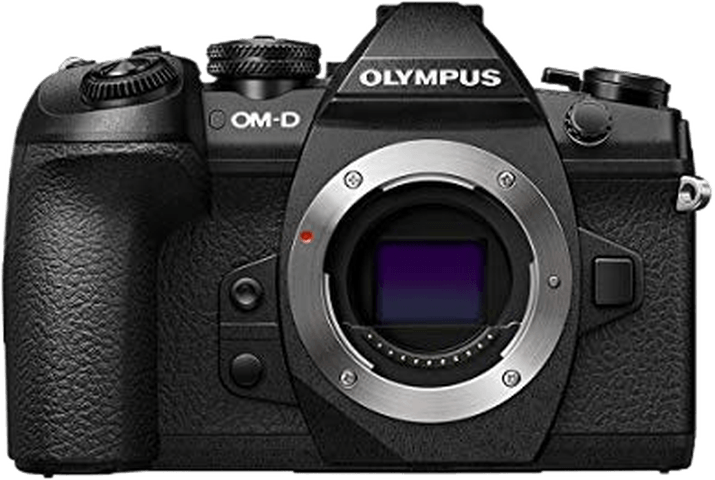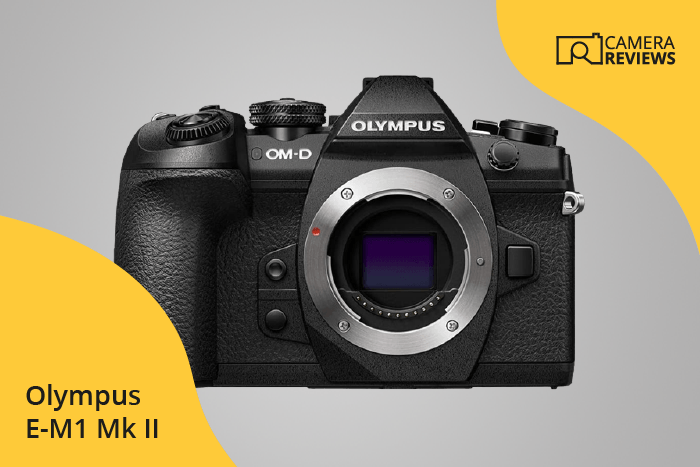Olympus OM-D E-M1 Mark II Specs and Scores

The Olympus OM-D E-M1 Mark II receives a score of 68/100, reflecting its quality as a mirrorless camera. Announced on September 19, 2016, and released the same year, this camera entered the market with a launch price of $2000. Measuring 134 x 91 x 67mm and weighing 574g (1.27lbs), the E-M1 Mark II has decent specifications for a camera launched in 2016. Although it may not be the latest model, this camera still offers a good performance for photography enthusiasts.
Olympus OM-D E-M1 Mark II Overview and Optics
The Olympus OM-D E-M1 Mark II’s optics receive a score of 68/100. Equipped with 20.4 megapixels, a shooting speed of 60, and a CMOS sensor, this camera has the potential to produce high-quality images. The TruePic VIII processor and DXOMARK sensor score of 80 contribute to its overall performance.
In the current market, the Micro Four Thirds sensor size is smaller than the commonly used APS-C and full-frame sensors. However, the camera compensates with a Micro 4/3 lens mount, allowing for a wide range of lens options. The built-in image stabilisation and 4:3 aspect ratio provide additional benefits for various photography styles.
Considering these specifications, the Olympus OM-D E-M1 Mark II holds its ground as a versatile and capable camera, despite facing competition from cameras with larger sensors and more advanced features.
Olympus OM-D E-M1 Mark II Video Performance
The Olympus OM-D E-M1 Mark II receives a video score of 70 out of 100. It features a maximum video resolution of 4K (4096 x 2160) and a maximum video frame rate of 24fps. Additionally, this camera includes built-in time-lapse functionality.
In terms of video capabilities, the OM-D E-M1 Mark II offers decent performance for its category. However, it may not be the top choice for videographers looking for the most advanced features. The 4K resolution and 24fps frame rate are standard in today’s market, but other cameras offer higher frame rates for smoother motion capture.
The OM-D E-M1 Mark II is a solid choice for photographers who occasionally shoot video, but it may not be the ideal camera for dedicated videographers seeking cutting-edge technology.
Olympus OM-D E-M1 Mark II Features and Benefits
The Olympus OM-D E-M1 Mark II earns a feature score of 70/100. This camera boasts a 3-inch touchscreen with a screen resolution of 1,037,000 dots. The flip screen adds versatility for various shooting angles. Unfortunately, the camera lacks GPS functionality, but it compensates with WIFI connectivity. However, it does not support Bluetooth.
When compared to other cameras in today’s market, the OM-D E-M1 Mark II holds its ground with its touchscreen and flip screen features, which are commonly sought after by photographers. The absence of GPS and Bluetooth may be a drawback for some users, but the WIFI connectivity helps bridge the gap.
Taking all these specifications into account, the Olympus OM-D E-M1 Mark II proves to be a solid camera with a decent feature set. Its performance in the market reflects the balance between its advanced features and the absence of certain modern functionalities.
Olympus OM-D E-M1 Mark II Storage and Battery
The Olympus OM-D E-M1 Mark II receives a storage and battery score of 57/100. This camera has two memory card slots, supporting SD, SDHC, and SDXC cards. With a battery life of 440 shots, the camera uses a BLH-1 battery type. However, it does not offer USB charging.
In today’s market, the storage options are adequate, but the battery life falls short compared to competitors. The lack of USB charging further limits the camera’s convenience and flexibility. To remain competitive, improvements in battery life and charging options are necessary.
Olympus OM-D E-M1 Mark II Alternatives
Do you want to know how the Olympus OM-D E-M1 Mark II compares to its competitors? Have a look at the most popular comparisons for this camera below:
- Olympus OM-D E-M1 Mark II vs OM-D E-M1 Mark III
- Olympus OM-D E-M1 Mark II vs OM-D E-M10 Mark II
- Olympus OM-D E-M1 Mark II vs OM-D E-M5 Mark II
- Olympus OM-D E-M1 Mark II vs OM-D E-M5 Mark III
- Fujifilm X-T30 vs Olympus OM-D E-M1 Mark II
- Olympus OM-D E-M1 Mark II vs Panasonic Lumix DC-G9
Olympus OM-D E-M1 Mark II FAQ
Does the Olympus OM-D E-M1 Mark II Have Built-in Image Stabilization?
Yes, the Olympus OM-D E-M1 Mark II features a 5-axis built-in image stabilization system, which helps to reduce camera shake and produce sharper images.
Does the Olympus OM-D E-M1 Mark II Support 4K Video Recording?
Yes, the Olympus OM-D E-M1 Mark II supports 4K video recording at 30fps, allowing for high-quality video capture with crisp details and vibrant colors.
What Size Sensor Does The Olympus OM-D E-M1 Mark II Have?
The Olympus OM-D E-M1 Mark II has a Micro Four Thirds sensor, which is smaller than full-frame sensors but provides excellent image quality and performance in a compact size.
Does the Olympus OM-D E-M1 Mark II Have a Dual Memory Card Slot?
Yes, the Olympus OM-D E-M1 Mark II features dual memory card slots, allowing for more storage capacity and the flexibility to use different card types or backup options.
Does the Olympus OM-D E-M1 Mark II Have a Touch Screen?
Yes, the Olympus OM-D E-M1 Mark II has a touch screen, making it easier to navigate through menus, review images, and control various camera settings with ease.
Does the Olympus OM-D E-M1 Mark II Have Wi-Fi and Bluetooth?
The Olympus OM-D E-M1 Mark II has built-in Wi-Fi for wireless image transfer and remote control, but it does not have Bluetooth connectivity.
Does the Olympus OM-D E-M1 Mark II Have GPS?
No, the Olympus OM-D E-M1 Mark II does not have built-in GPS, but location data can be added to photos using a connected smartphone or an external GPS device.
Is the Olympus OM-D E-M1 Mark II Weather Sealed?
Yes, the Olympus OM-D E-M1 Mark II is weather sealed, making it resistant to dust, moisture, and freezing temperatures, allowing for reliable performance in various conditions.
Does the Olympus OM-D E-M1 Mark II Have a Built-in Flash?
No, the Olympus OM-D E-M1 Mark II does not have a built-in flash, but it has a hot shoe for attaching an external flash unit if needed.

